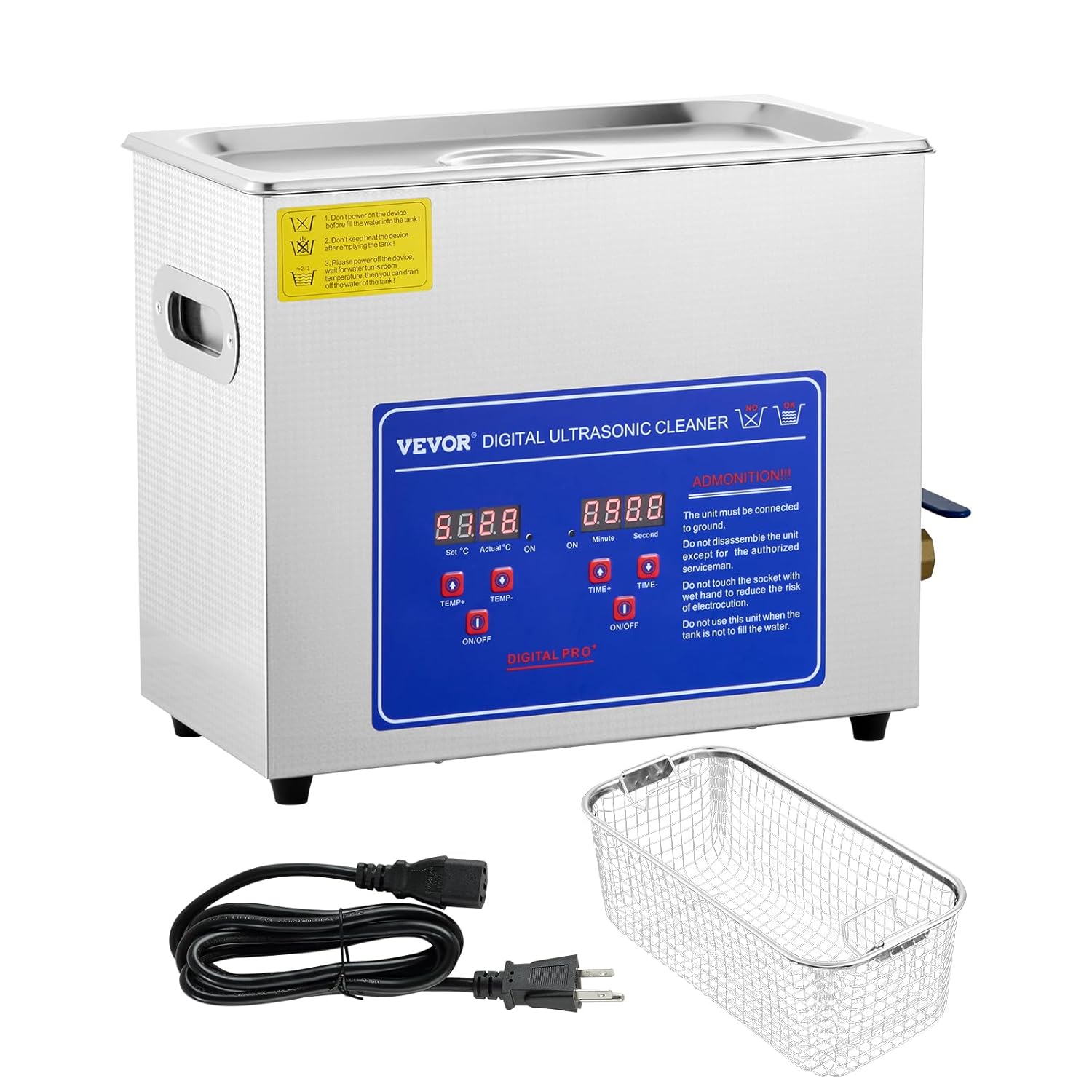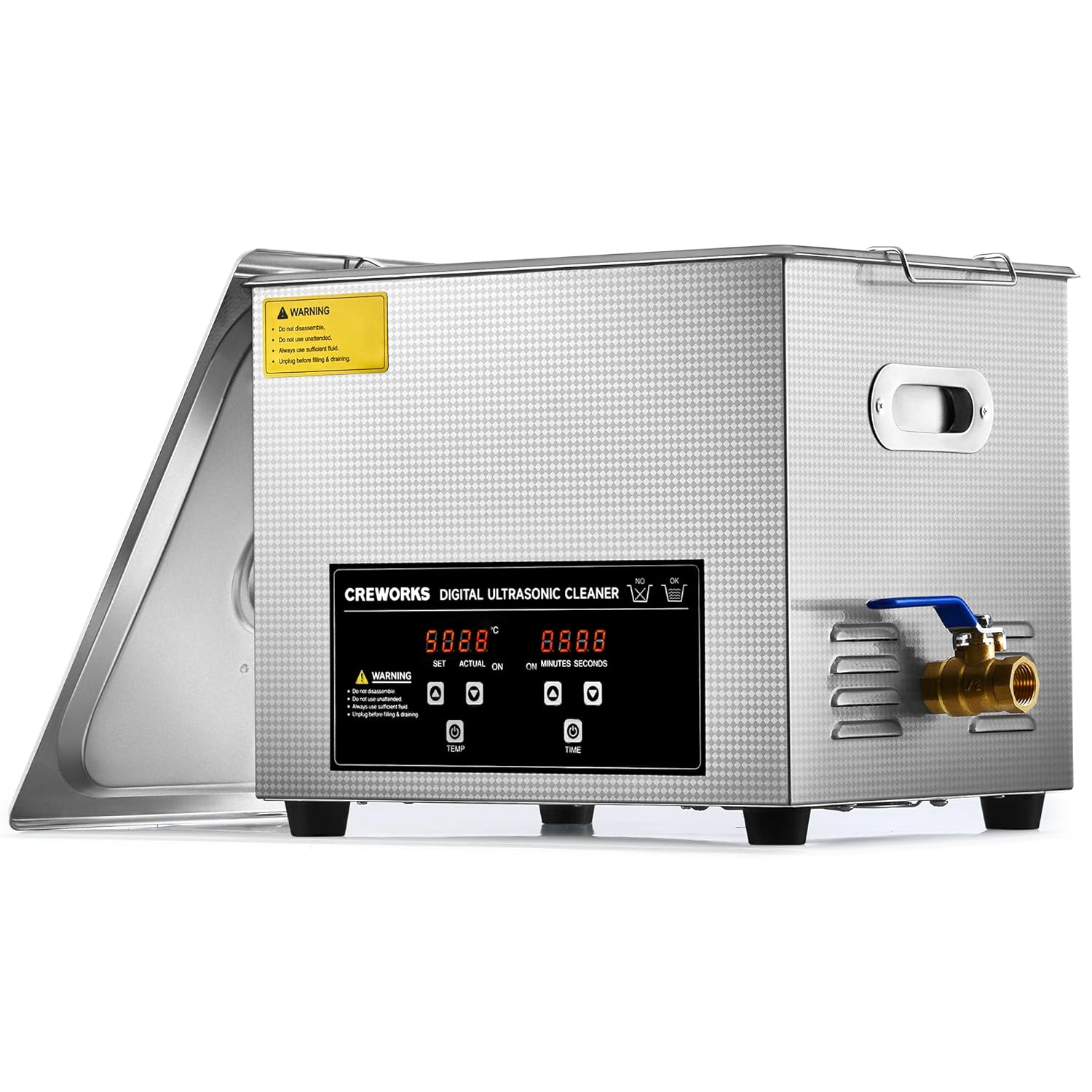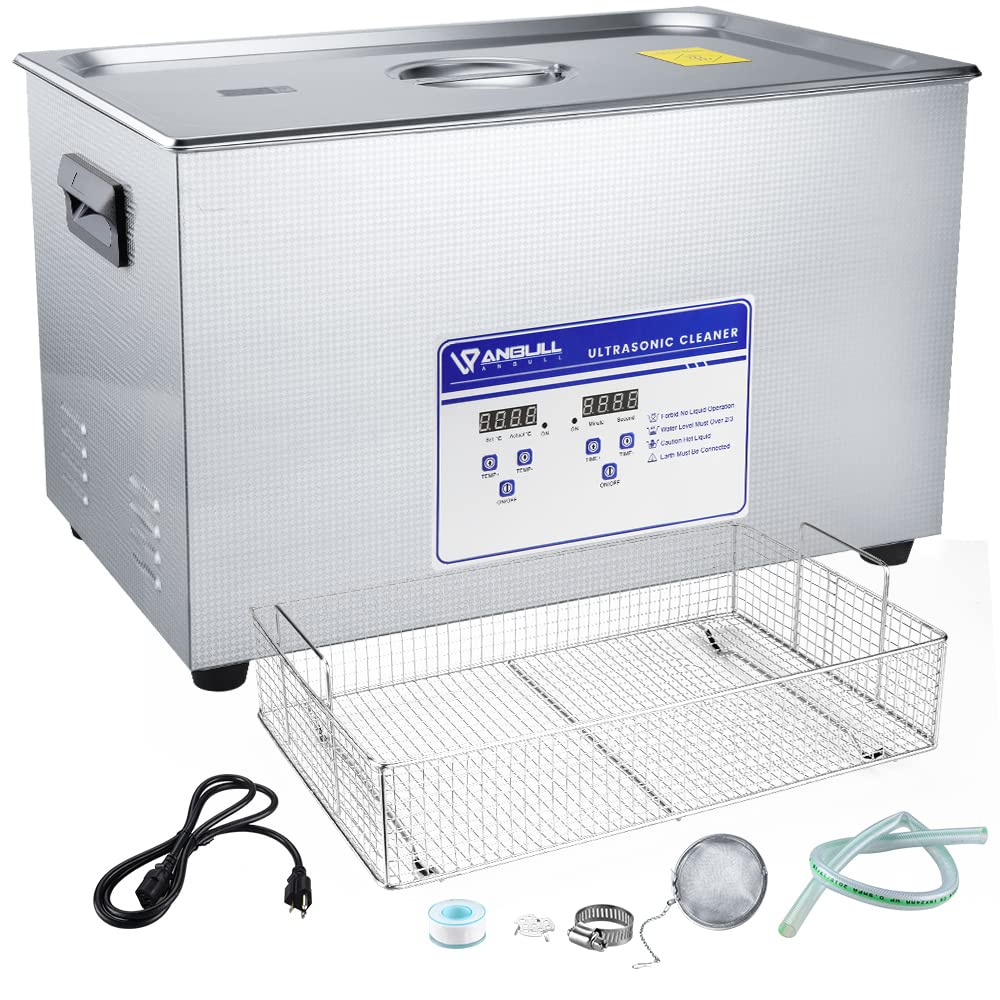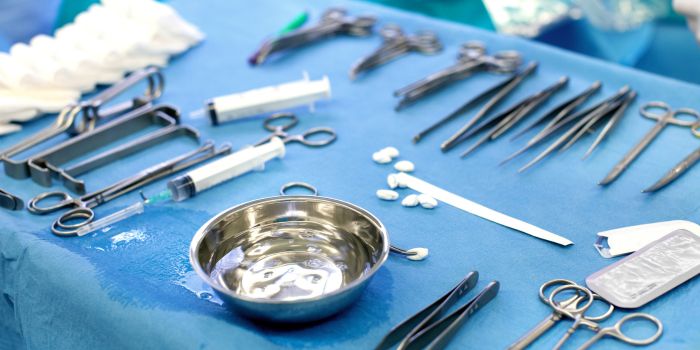Surgical instruments are crafted from durable materials like carbon steel, stainless steel, aluminum, titanium, and tungsten carbide. Among these, stainless steel reigns as the most commonly used, thanks to its exceptional strength and corrosion resistance.
However, let’s not forget that even the best materials need proper care. Inadequate cleaning of surgical instruments doesn’t just risk rust and corrosion; it can also lead to the spread of harmful germs and pathogens—a risk no medical facility can afford.
Decontamination is, therefore, a crucial step in maintaining safety standards and preventing infections, whether in hospitals, laboratories, dental clinics, ophthalmic industries, or even veterinary facilities where our furry friends receive care.
To achieve thorough decontamination, healthcare professionals rely on two primary methods:
- Manual Cleaning: A hands-on approach for precision and care.
- Automated Solutions: Advanced tools like ultrasonic cleaners take over, ensuring instruments are impeccably cleaned with minimal effort.
While manual cleaning can be performed regularly, especially when medical instruments are minimally contaminated (or as a preliminary step before sterilization), thorough cleaning and sterilization become crucial when instruments are heavily contaminated or pose significant risks during use.
In both cases, the goal is clear: safeguarding patients, animals, and practitioners alike by keeping surgical tools in pristine condition.
Why Clean Surgical Instruments Ultrasonically?
Ultrasonic technology has gained widespread acceptance across various sectors, particularly in medical and surgical fields, for its ability to simplify the cleaning process before terminal sterilization.
Thanks to the effortless as well as time-saving cleaning process veterinarians rely heavily on ultrasonic cleaner machines to thoroughly wash their surgical instruments.
Ultrasonic energy, harnessed through these advanced cleaning machines, works with built-in transducers to ensure efficient and thorough cleaning of surgical instruments. This method of sterilizing instruments is not only reliable but also safe, without posing risks to staff or patients.
Plus, by eliminating the need for hand scrubbing, ultrasonic cleaning significantly enhances infection control and operational efficiency in veterinary clinics.
If you’re on the lookout for a dependable ultrasonic cleaner, we’ve compiled a list of some of the best machines available. Before making a purchase online, you can review their features, consumer ratings, and feedback in detail.
Additionally, we’ve outlined basic steps for cleaning medical and surgical instruments in hospitals, clinics, and labs using both ultrasonic and manual methods.
5 Best Ultrasonic Cleaners for Medical Instruments
We may earn a small commission if you click and shop from the links on this page.
As such, there are various ultrasonic cleaner models available for cleaning surgical instruments such as periodontal probes, forceps, elevators, bone curettes, elevators, retractors, scalpels, needle holders, etc.
To make your selection easier, we list down the top 5 models that are bestselling on Amazon. These are not only affordable but also reliable in providing the best cleaning without any risk. Check them in detail before picking one for your instruments.
1- VEVOR Ultrasonic Cleaner

If you’ve ever wished for a magical wand to clean your delicate surgical instruments without lifting a finger, the VEVOR Ultrasonic Cleaner 6L might just be the next best thing.
Armed with cutting-edge technology and a knack for precision, this cleaning marvel brings the sparkle back to your instruments faster than you can say “ultrasound.”
Featuring three advanced 60W transducers with a sandwich piezoelectric structure (fancy science words for “super effective”), this cleaner doesn’t just clean; it revolutionizes. It’s as if someone gave your cleaning routine a high-tech makeover, ensuring efficiency levels go from “meh” to “wow” instantly.
At 40kHz ultrasonic frequency and 180W power, this machine doesn’t mess around. It’s like having a team of microscopic cleaning ninjas that leave no grime untouched. Paired with a 200W heating function, the cleaner ensures your items get a warm and thorough scrub, all while staying damage-free. Think deep-clean magic with zero elbow grease required.
The 6L capacity stainless steel tank isn’t just durable—it’s practically indestructible. The spacious interior (12.8”x6.9”x5.9”) comes with a matching basket to keep your tiny instruments organized and safe while getting their ultrasonic bath. You can get this device in multiple sizes from 6L to 30L based on your requirements.
Furthermore, there’s a sleek digital control panel that lets you customize time (0-30 minutes) and temperature (0-80℃) settings with a simple touch. Certified by FCC, CE, RoHS, and UL, it’s as trustworthy as it is effective. Plus, it looks stylish enough to make you feel like you’re operating a gadget straight out of a sci-fi movie.
2- CREWORKS Ultrasonic Cleaner

When it comes to cleaning delicate items and stubborn grime, the CREWORKS ultrasonic cleaner doesn’t just clean—it conquers. With a massive 10L (2.6-gallon) capacity, this cleaning powerhouse with 304 stainless steel tank takes precision cleaning to a whole new level, making it a must-have for medical professionals and perfectionists alike.
With a 40kHz ultrasonic frequency, this CREWORKS 10L Ultrasonic Cleaner uses the magic of sound waves to clean every nook and cranny of your items.
Whether it’s grease on the instruments, tarnish on jewelry, or residue on repair tools, the CREWORKS cleaner gets in there like a meticulous cleaning detective, leaving nothing behind. You can get the device in sizes from 1.8L to 30L based on your requirements.
The digital control panel makes setting the timer and heater as easy as pie. Adjust the timer and temperature to suit your cleaning needs, and watch as the machine works its magic with precision. It’s like having a personal cleaning assistant for all your surgical instruments.
3- Anbull Ultrasonic Cleaner Machine

For anyone who needs industrial-grade cleaning power, the Anbull ultrasonic cleaner is here to deliver. Constructed from premium 304 stainless steel, this ultrasonic cleaner doesn’t just perform—it lasts. Leakproof and sturdy, it can take on years of heavy-duty use without breaking a sweat. Also, with a whopping 30-liter capacity and enough power to make stubborn grime tremble, this machine is the ultimate sidekick for serious cleaning tasks.
Packing 600W of ultrasonic power and 500W of heating power, this beast tackles the dirtiest jobs like a pro. Whether it’s grease-covered tools or delicate instruments, the 10 ultrasonic transducers of this Anbull 30L Ultrasonic Cleaner ensure that every particle of grime is obliterated with ruthless efficiency.
The large LCD digital display offers precise control over temperature (68℉–176℉) and time (1–30 minutes). Just set it, hit the switch, and let the ultrasonic waves do the dirty work. The sleek display makes operating this machine feel more like piloting a high-tech spaceship.
4- Flexzion Ultrasonic Cleaner

Flexzion commercial ultrasonic cleaner is a perfect blend of effectiveness and reliability for those who want to clean surgical instruments without any risk or hassle.
This professional Flexzion ultrasonic cleaner device generates the 42,000Hz of ultrasonic power for effective cleaning of objects.
The unit is good to use for cleaning all types of medical instruments. But you can clean various other items like electronic tools, jewelry, glasses, etc., using this high-tech ultrasonic cleaning machine which has a large capacity stainless steel tank (1.5L to 6L), digital timer, and heater.
Although you can use the unit with plain water, using an appropriate ultrasonic cleaner solvent or solution is recommended if the surgery instruments you need to clean are highly soiled or contaminated.
5- TruSonik Ultrasonic Cleaner

TruSonik is one of the leading ultrasonic cleaner brands that manufacture high-quality ultrasonic cleaning machines for hospitals, and medical centers.
This 2.5 Liter capacity TruSonik ultrasonic cleaner unit in particular comes with a digital timer (for cleaning) and digital temperature control (for heating).
The high-grade industrial transducer gives the machine awesome cleansing power, providing the most effective cleaning within just a few minutes.
Furthermore, the unit is made up of a 100% stainless steel body which comes with an unconditional money-back guarantee of 1 year. Also, the company stocks all the spare parts in case the unit needs any replacement or repair.
How to Use Ultrasonic Cleaner for Surgical Instruments?
When sterilizing the surgical instruments in an ultrasonic machine, the device uses an intense yet gentle process known as cavitation that scrubs away all contaminants from the instrument’s surface.
Here are the quick seven steps to accomplish the process safely.
Step 1. Before starting the cleaning process, disassemble all your medical instruments with removable parts to allow thorough cleaning.
Step 2. Place the lightweight instruments, such as scissors and microsurgical tools, on the top rack of the ultrasonic cleaner.
Step 3. Heavier surgical instruments should be placed in a separate tray or basket to avoid damage or improper cleaning.
Step 4. Also, remember to keep sharp instruments apart from non-sharp ones during cleaning. This prevents accidents and ensures safe handling.
Step 5. Now fill an appropriate cleaning solution in the tank and set the ultrasonic cleaner to the recommended temperature and time for the specific instruments being cleaned.
Step 6. After washing, rinse the instruments thoroughly with sterile or distilled water to remove any solution residue.
Step 7. Finally, dry the instruments using a lint-free cloth or an air-drying method and store them in a clean, dry, and designated area.
Keep in mind that while cleaning refers to washing the equipment to remove the dirt and grime, sterilization is a term that refers to a process that kills living agents like viruses, bacteria, fungi, and spore forms.
Tools like ultrasonic cleaners and cleaning solutions are commonly used in the initial cleaning phase. The subsequent step, which targets the elimination of all microbial life, including spores, to ensure the instruments are safe for use is achieved through various methods, such as:
- Autoclaving: High-pressure saturated steam.
- Chemical Sterilants: Using approved chemicals like glutaraldehyde or hydrogen peroxide.
- Dry Heat: Exposing biological instruments to high temperatures for a specified period.
- Gas Sterilization: Using gases like ethylene oxide for sensitive equipment.
How to Clean Medical Instruments Manually – Without an Automatic Machine?
Instruments used in surgery and dental procedures get heavily contaminated with saliva, blood, or tissues and need to be thoroughly cleaned before the detailed sterilization process.
If you can not use an ultrasonic cleaning device for any reason, the careful manual process is important to accomplish for surgical technologists, medical technicians, or assistants so that the greasy instruments can be cleaned and reused without any risk to patients.
Some of the basic steps involved in this manual process of cleaning the medical parts are:
- After the usage, soak the surgical instruments in lukewarm water for a few minutes until all the soiling is softened.
- Rinse the instruments under warm running water (avoid hot water) to get rid of all the deposited liquids and tissue.
- Use a stiff nylon brush to clean the instrument using a neutral pH7 detergent – brush up every instrument thoroughly until its surface gets fully cleaned.
- Before cleaning, make sure blades and hinged instruments are interlocked properly. If you are cleaning suction tubes, check that their interiors are also clean.
- Finally, rinse surgical instruments under warm running water again until they become clean and detergent-free.
- While washing scissors or any hinged instrument, check them carefully by opening and closing them till they become cleaned.
- Now to dry naturally, leave instruments under open air in a clean area free of moisture.
Remember that the soaking time while manually washing the instruments may range from 10 to 15 minutes. But that will depend on the type of instruments and the procedure it has undergone.
Safety Precautions to be Taken while Cleaning Surgical Instruments
Cleaning, disinfecting, and sterilizing medical and surgery instruments is a highly responsible job.
For those who are employed in cleaning surgical instruments, it is recommended to take professional advice from the manufacturers or to read the instruction manuals carefully before employing particular methods. This will lower all the risks involved and help in cleaning the instruments safely and risk-free in hospitals.
While cleaning it’s also essential to follow certain precautions for the safety of the individuals involved.
- Before you start cleaning the laboratory glassware or clinical instruments, wear clean surgical scrubs approved by the hospital authority. Make sure that these scrubs are laundered and free from any kind of dirt, grime, or soil.
- To reduce the risk of pathogens, also make sure to wear a liquid-resistant apron, surgical gloves, and eyewear to protect your eyes while washing the surgical instrument.
- To protect the instruments from hair & dandruff, wear the surgical headcover. Also, cover your nose with a surgical mask to prevent the spread of bacteria.
- While cleaning the instruments, make sure to take out your jewelry and watch from your body. Keep your fingernails short and clean.
The Conclusion
The ultrasonic cleaner device is undoubtedly an ideal machine that can be utilized for cleaning surgical instruments. It’s not as effective as autoclaving but is much better than manual cleaning.
Care that you read the steps, time settings, and other details provided with your specific machine before you use it for the very first time. By combining ultrasonic cleaning with appropriate sterilization, you can maintain the highest level of hygiene and safety for surgical tools.
If employing manual methods, ensure that proper techniques and safety guidelines are followed to avoid damage to the instruments and ensure a thorough cleaning.

